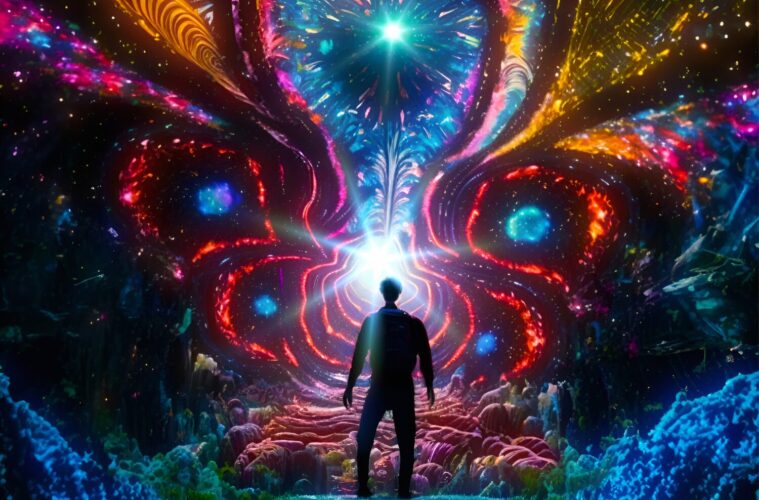A psychedelic high seems unlike any other. Though psychedelic drugs often have hallucinogenic properties, not everyone who trips on psychedelics has frightening or enlightening “visuals” to tell — and not everyone will feel as though they’re miraculously handed a “greater” purpose in life, either. These may be the commonly-told effects of psychedelic drugs, but it doesn’t seem like it’s always the case for everyone.
Here are questions you might find yourself asking when it comes to psychedelics:
Which drugs can give me a psychedelic high?
Hallucinogens have been around since ancient times. The earliest recorded psychedelic use was discovered in a cave in Algeria; the cave had a mural of what experts call the “mushroom man” or the “mushroom shaman” — a painting of a bee-headed man with several mushrooms sprouting out of his body. This mural is believed to be 7,000 to 9,000 years old.
There are also other discoveries — where evidence of psychedelic drugs was used — in other caves and stone carvings all over Latin America that date back thousands of years ago. It wasn’t until the westerners discovered psychedelics that they studied the compounds of hallucinogens and eventually synthesized them to become LSD, DMT, MDMA, etc.
Here are some psychedelic drugs:
- Ayahuasca
- LSD (Lysergic Acid Diethylamide)
- Psilocybin (magic mushrooms)
- DMT (Dimethyltryptamine)
- Salvia
- Mescaline
- 2C-B (4-Bromo-2,5-Dimethoxyphenethylamine)
- NBOMes (N-Methoxybenzyl)
- Peyote (Lophophora Williamsii)
What kind of high can psychedelics give me?
The Ohio State University College of Social Work conducted a study where they asked 1,000 participants to report the types of high some psychedelics gave them. They experimented with the effects of LSD, psilocybin, peyote, mescaline, ayahuasca, and 5-MeO-DMT (a close relative of DMT that the researchers took from the glands of the Colorado river toad).
Those who were surveyed by the university were given questionnaires. The participants were asked if their psychedelic trip was “mystical (evoking a sense of pure awareness, positive mood and/or transcendence of time and space that is difficult to describe in words), psychologically insightful (eliciting acute insight into memories, emotions, relationships, behaviors or beliefs), or challenging.”
Researchers also checked the participants’ anxiety and depression levels and they were asked to rate their “satisfaction in life” and “psychological flexibility” — or their ability to remain true to their values regardless of their experience before, during, and after the effects of the drugs. The research yielded 3 distinct types of psychedelic highs.
High scoring
High scores on the mystical and insightful scale; moderate on the challenging experience.
Low scoring
Low to moderate scores on the mystical and insightful scale; low on the challenging experience.
Positive scoring
High scores on the mystical and insightful scale; low on the challenging experience.
According to one of the authors of this study, Aki Nikolaidis, “The group that had the highest insightful and mystical experiences and low challenging experiences showed the most benefit in terms of remission of anxiety and depression symptoms and other longer lasting benefits to their life.” However, since the research is fairly new, they’re yet to see how psychedelics can be used in a clinical setting — and if the conclusions of this study can be used as part of a treatment for mental illnesses such as PTSD among military veterans.
Are psychedelics safe?
Psychedelics are generally considered safe. However, as with most drugs, there will always be potential side effects to be wary about. Those who experience a “bad trip” can feel anxious or paranoid. As such, the person may find that their heart is racing or that their blood pressure may spike — this can be dangerous if you have hypertension or heart problems.
Another problem that might arise when taking almost any substance is the uncertainty of whether or not the drug is what the dealer claims it is. Combined drug use can pose a serious risk to one’s health — and the effects can sometimes be lethal. Moreover, some drugs — psychedelics included — can make a person feel dizzy, feel dissociated from their body (as though they’re weightless, weighed down, or that they’re not in their own body), or might experience muscle weakness. This can also be dangerous if a person is driving or operating heavy machinery.
Psychedelics have long been reported to be beneficial to some people; such as those who deal with anxiety, depression, headaches, OCD, PTSD, and many more. On the flip side, however, psychedelic drug use can exacerbate existing mental issues in some users.
To Conclude,
A psychedelic high may sometimes involve auditory or visual hallucinations, but it’s currently being studied to potentially help those with mental health problems. Tripping on psychedelics are generally safe — but overdosing, mixing drugs, and being reckless when high (on just about every drug) can potentially endanger a person using psychedelics. Lastly, not all psychedelic drugs are legal or decriminalized in the US. Tripping on psychedelics may sound like an awakening experience — but make sure that you’re not breaking the law when trying it.
Advertising disclosure: We may receive compensation for some of the links in our stories. Thank you for supporting LA Weekly and our advertisers.

